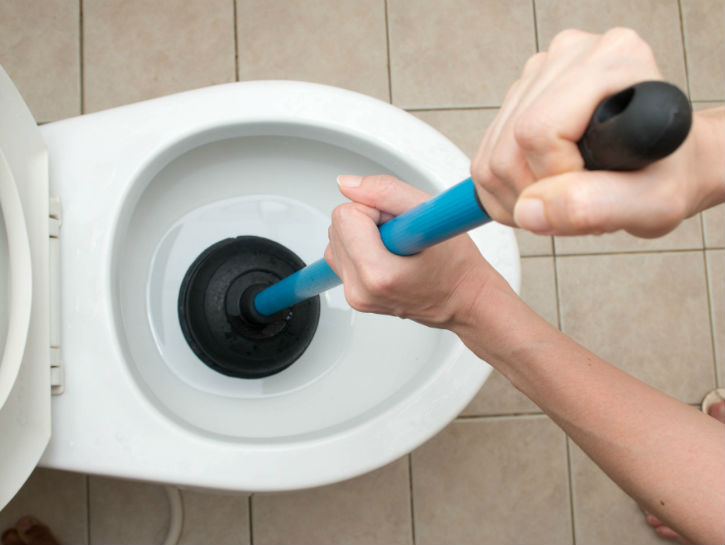There are few moments more dreadful than flushing a toilet and realizing it’s clogged. Don’t let the panic set in — a clogged drain can be a big problem, but so long as you have the right tools and technique, there’s no blockage that you can’t take care of. Check out the right plungers to buy and how to use them effectively.
The Types Of Plungers
Depending on which drain gets clogged, you’ll need one of two plungers:
Cup Plungers

A cup plunger is ideal for dealing with a blocked sink or tub drain. They have a dome-shaped rubber cup with a flat bottom, and they are perfect for fitting into those tight spaces and providing the pressure to unclog these drains.
Flange Plungers

When combatting a clogged toilet, you’ll want a flange plunger. This plunger has a taller rubber cup than the sink plunger, with a sleeve on the bottom of the cup that creates a tighter seal and adds more suction. The narrow flange fits perfectly into the toilet bowl, making it the perfect choice for a blocked toilet.
The Most Effective Way To Unclog A Toilet
Now that you know what plunger to use, you’ll be prepared when it comes time to roll up your sleeves and get down to the nitty-gritty.
- Fill the basin if there is less than three inches of water, as you’ll need enough water to completely submerge the head of the plunger.
- Check that the flange of the plunger is fully extended. Lower the plunger into the bowl at an angle to limit the amount of air that gets trapped in the cup, filling the cup with as much water as possible.
- Secure the cup of the plunger over the toilet hole. Make sure the flange is inside the hole, and the cup forms a tight seal.
- With a tight grip on the plunger handle, push down forcefully, then pull up hard on the plunger without breaking the cup’s seal. Repeat this action five or six times. On the last pull, pull the cup off the hole. Doing this creates rapid compression and suction which will help loosen the clog.
- Repeat all the steps until the water drains through the hole — this means the clog has been released.
- Set the plunger aside and flush the toilet to ensure the clog is gone.
- Clean the plunger by rinsing it in clean toilet water and mixing it with bleach and liquid dish soap. Swirl the plunger in the water then remove it and lay it on a dry towel with the flange out.
Be sure to take note of a few things when dealing with a clogged toilet:
- If you think the toilet is about to overflow, make sure the water is cut off by either checking the rubber toilet flapper in the toilet tank or using the toilet shut-off valve.
- Add a touch of liquid dish detergent to your clogged drain to help it combat and release the clog.
- A drain snake can be useful in dislodging the clog if the plunger isn’t doing the trick.
If all else fails, call in a professional.
Preventing Clogs

Now that you know how to unclog your toilet, it’s worth taking the steps to make sure you don’t have to use this technique too often. A few tricks for preventing your toilet from clogging include:
- Don’t flush food, paper towel or kitty litter down the drain, as they do not go down the pipes smoothly with water and can form blockages in your pipeline.
- Clean your pipes using a homemade mixture of white vinegar and baking soda. Let it sit for 20 minutes before flushing it down.
- For kitchen sinks, get a drain screen to catch foods and fats so that they don’t go down the sink.
